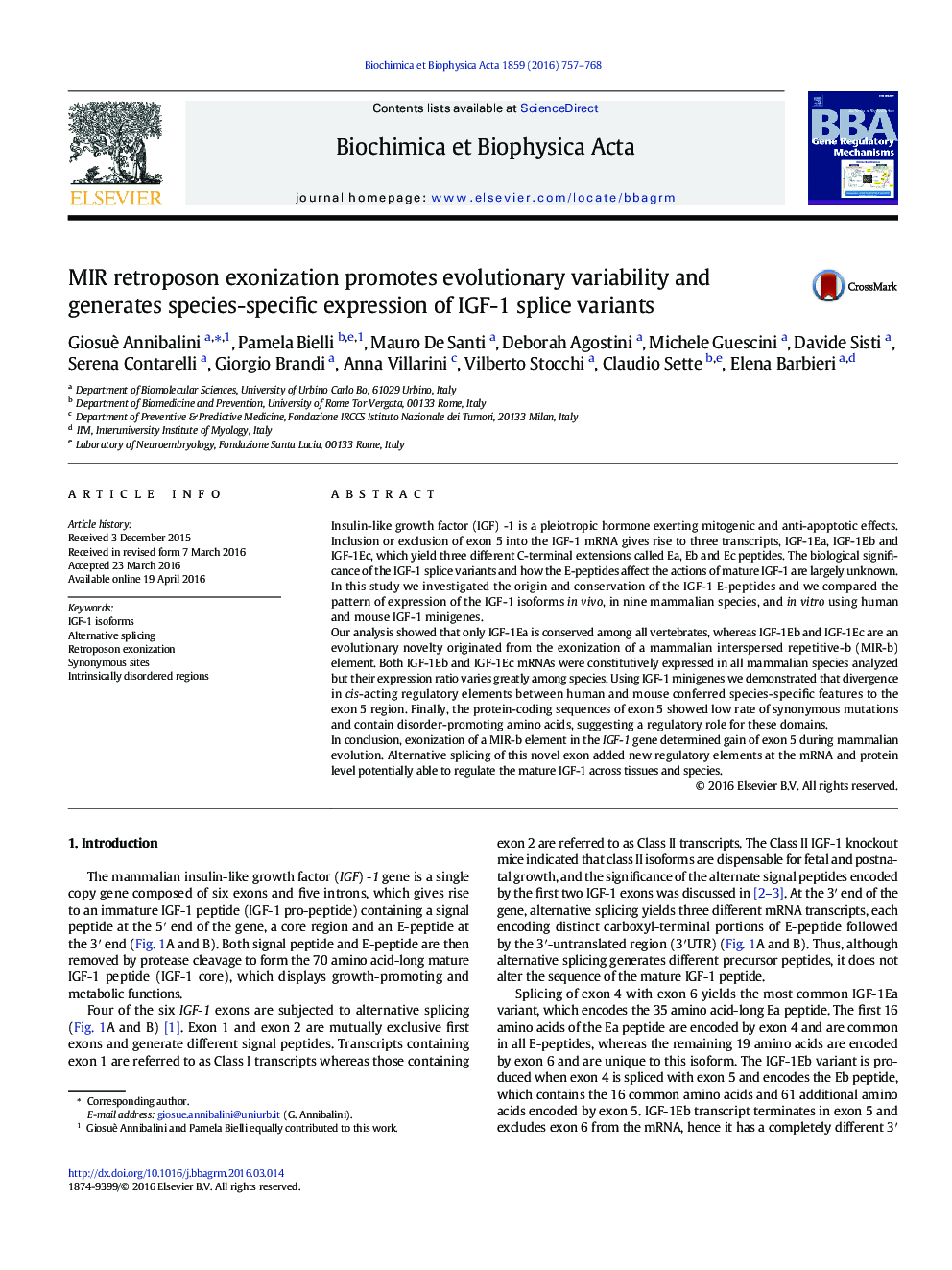| کد مقاله | کد نشریه | سال انتشار | مقاله انگلیسی | نسخه تمام متن |
|---|---|---|---|---|
| 1946319 | 1054213 | 2016 | 12 صفحه PDF | دانلود رایگان |

• MIR-b exonization explains the origin of the alternatively spliced IGF-1 exon 5.
• MIR-derived IGF-1 splice variants are differentially expressed among mammals.
• cis-Regulatory sequences mainly contribute to species-specific splicing pattern.
• The protein-coding region of exon 5 is enriched in regulatory elements.
• The gain of exon 5 creates new opportunities to regulate IGF-1 bioavailability across tissues and species.
Insulin-like growth factor (IGF) -1 is a pleiotropic hormone exerting mitogenic and anti-apoptotic effects. Inclusion or exclusion of exon 5 into the IGF-1 mRNA gives rise to three transcripts, IGF-1Ea, IGF-1Eb and IGF-1Ec, which yield three different C-terminal extensions called Ea, Eb and Ec peptides. The biological significance of the IGF-1 splice variants and how the E-peptides affect the actions of mature IGF-1 are largely unknown. In this study we investigated the origin and conservation of the IGF-1 E-peptides and we compared the pattern of expression of the IGF-1 isoforms in vivo, in nine mammalian species, and in vitro using human and mouse IGF-1 minigenes.Our analysis showed that only IGF-1Ea is conserved among all vertebrates, whereas IGF-1Eb and IGF-1Ec are an evolutionary novelty originated from the exonization of a mammalian interspersed repetitive-b (MIR-b) element. Both IGF-1Eb and IGF-1Ec mRNAs were constitutively expressed in all mammalian species analyzed but their expression ratio varies greatly among species. Using IGF-1 minigenes we demonstrated that divergence in cis-acting regulatory elements between human and mouse conferred species-specific features to the exon 5 region. Finally, the protein-coding sequences of exon 5 showed low rate of synonymous mutations and contain disorder-promoting amino acids, suggesting a regulatory role for these domains.In conclusion, exonization of a MIR-b element in the IGF-1 gene determined gain of exon 5 during mammalian evolution. Alternative splicing of this novel exon added new regulatory elements at the mRNA and protein level potentially able to regulate the mature IGF-1 across tissues and species.
Figure optionsDownload high-quality image (346 K)Download as PowerPoint slide
Journal: Biochimica et Biophysica Acta (BBA) - Gene Regulatory Mechanisms - Volume 1859, Issue 5, May 2016, Pages 757–768